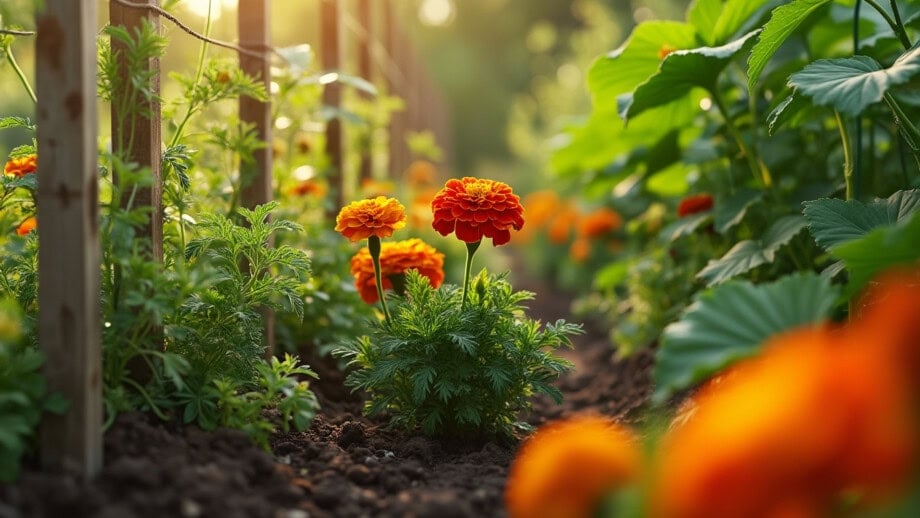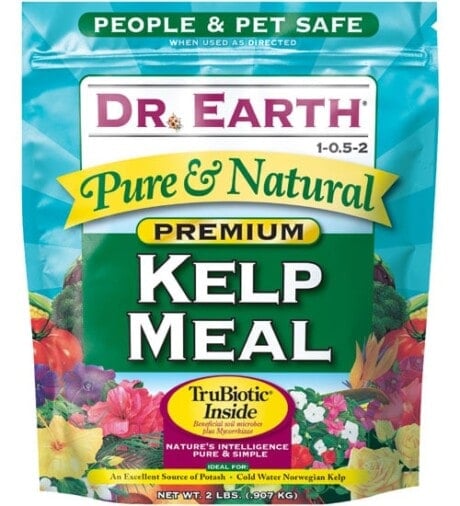Getting Started
Take the time to properly plan your vegetable garden and it will reward you with fresh, delicious produce every year.


#1 Soil Tester
Available Here
Soil Test Kit
You'll appreciate this easy, fast and fun way to achieve better growing results.
$17.95Learn morePlant carrots in January and you’ll never have to eat carrots. – Author Unknown
Before you start a garden, you’ve got to plan where you’re going to put it. Your choice of location can have a big impact on how successful you are at growing vegetables. Here are some suggestions to help you put together the perfect vegetable garden plan from scratch:
Think Small. “Start out small” is good advice for your first garden. That’s because a small garden usually requires less work and is easier to maintain than a large one.
On the sunny side of the street. You’ll want it on the south side of your property to maximize sun exposure. Vegetable gardens need a minimum of six hours of direct sunlight.
Avoid Weed War Fare. Try not to locate your garden in an area that’s already infested with weeds. Remove the weeds first or, if it’s possible, find a different location.
Where there’s water, there’s garden. You’ll want to place your garden plot near water so that you don’t break your back hauling it during periods of little rain fall.
Draining on Your Brain. Your vegetable garden also needs good drainage. Drainage depends on slope and soil composition. The experts say to avoid planting a garden on land with a slope of 1.5 percent or greater. A slope that steep means rain will run off. If you must locate your garden on a sharp slope, terrace the garden to capture water just like they do in mountainous countries like Nepal.
Check out the neighbors. Look at what’s surrounding your proposed garden spot. The roots of nearby trees and shrubs can soak up water and nutrients that you want for your veggies. A two-foot trench around the garden can ensure that won’t happen.

FREE SHIPPING!
Garden Seeds
All heirloom seeds offered by Planet Natural are non-treated and non-GMO.
View allThe leader in organic gardening supplies since 1991! Planet Natural offers 100% safe and natural products that really work. Come see what we can offer your garden, your yard and your family.
Garden Design – Lay of the Land
When it comes to garden design there are a number of ideas to consider when planting vegetables. They include:
Row Upon Row. Row gardens are planted in parallel lines. They are easy to organize and are especially good for vegetables like corn or beans. They have two major disadvantages: a lower crop yield to a bed garden (see below) and you’ll spend a lot of time weeding between rows.
Bedding Down. In bed gardens, gardeners plant their vegetables in raised plots. All the plants are together in one plot without any rows. Bed gardens produce more than row gardens and are a better use of space. They also require less weeding. Raising the beds also helps with drainage, minimizes soil compaction and improves aeration — all of which promote healthy plants. The major disadvantage of beds is that they take more time to set up and there is a limit to size. (A single bed can’t be so wide that you can’t weed, water or harvest your vegetables.) Learn more about raised bed gardening here.
See Spot Grow. If you don’t have a lot of space, a spot garden may be your best bet. Look for small sunny spots where you can plant a small bed of your favorite vegetable. You can even plant vegetables in front of existing shrubbery. Of course, spot gardens by their very nature tend to be smaller than bed or row gardens, but they can be easier to take care of and require less planning.
Two Plots Are Better Than One. With the two-plot method you put vegetables requiring little space in a small kitchen garden and then have a separate plot for plants requiring more room.
Three ways to save on garden space are:Container Gardening Going Vertical Go Small |
What Goes Where
What you choose to plant is based on the type of soil you have and your local climate. In other words, instead of fighting Mother Nature, work with her.
If you’re planning a new garden don’t reinvent the wheel barrow. Instead, ask more experienced gardeners for advice on what to grow and how they cope with your particular climate. What’s worked for them will probably work for you, too! Your local Cooperative Extension Service is also a very good source of information.

FLOATING ROW COVER
Harvest-Guard
Floating row covers let in sun, water and air... but keep bugs out! Protects to 26°F.
Learn moreMade of premium grade spun-bond polyester, Harvest-Guard® Floating Row Cover has “pores” large enough to let in sunlight, water and air, but small enough to keep out insect pests. Single layer protects as low as 29°F; double layer protects as low as 26°F.
For gardeners who are fortunate to live in the land of sun and moderate temperatures — think the deep South — succession crops may be a part of your garden plan. That’s the practice where you plant the same ground twice. (If you live in a far Northern state, like Montana, you can skip reading this paragraph.) Succession planting means starting off with a crop that is quick to mature such as early peas or beans. Once they ripen, you harvest and then plant a crop like late cabbage, celery, carrots or beets. Succession planting requires more organization, but you’ll get more vegetables. Just remember when choosing crops, not to have your second crop be prone to the same plant diseases as the first round of vegetables or crops that require similar nutrients. Click here to learn more about succession planting and increase your small garden production.
Avoid planting large quantities of the same crop in the same spot. If you do need a large quantity of one type of vegetable grow several “mini” patches of that vegetable instead of one big one. This discourages pests and disease.

Also, you can grow different varieties of the same vegetable. This is another way to reduce the impact of pests and disease on your crops. It’s a way to hedge your bets, or should I say, crops?

#1 TOMATO BOX
Earth Box
A grow-anywhere planting kit that includes strong casters so it can be easily moved.
Learn moreNeed a tiny growing area? Earthbox® Organic Ready-To-Grow Garden Kit has the solution. This grow-anywhere tomato planter, complete with fertilizer and dialed-in watering system will have you growing veggies, herbs, flowers and fruits quickly and easily.
After you’ve decided what to plant you need to prioritize. Start plants that take the most time to grow first and plant late bloomers where they will receive the most amount of sun. Also, consider starting slow-to-mature plants, including tomato plants, indoors to give them more time to grow.
Finally think about the different heights of your full grown plants. You’ll want to make sure that tall-growing vegetables, like corn, won’t literally overshadow smaller-sized plants.
Some experts recommend planting vegetables with different nutrient requirements next to each other so as not to deplete the soil. In addition, you’ll probably want to rotate your crops, switching one crop to another with different nutrient needs. For example, you would not plant squash one year and cucumbers the next. That’s because squash and cucumbers are related and have similar nutrient demands. At a minimum, rotate crops once every other year (see Crop Rotation In the Home Garden). For best results, rotate on a three to eight-year basis.
In addition to figuring out what plants to put where, you’ll also need to decide when. Determine the days needed for a plant to mature and plan/plant accordingly based on your local growing season. The USDA has a plant hardiness zone chart that will help you decide when it’s time to planting.
PICKING YOUR PLANTS
|
|||
| Very Tender
Cantaloupe |
Tender
Bean, bush |
Half-Hardy
Beet |
Hardy
Broccoli |
Vegetables can usually be divided into two categories: warm and cool season. Warm-season crops can be divided into tender and very tender vegetables, while cool-season crops can be further categorized as hardy and half hardy. Keep in mind that very tender vegetables can’t handle frost and will not do well in environments with cool night-time temperatures below 55˚F. Tender crops don’t like frost, but can handle cool night-time temperatures. Hardy cool-season vegetables can handle frost, but not deep winter. Half-hardy, cool-season vegetables can withstand cool temperatures and light frosts, but won’t survive hard freezes and frosts.
Finally, keep a diary so you can learn from year to year and improve your garden. Keep information about what soil amendments you’ve used, what the weather was like (in particular how much rainfall), planting dates, days to harvest, disease and pest problems and the solutions you’ve tried and how well they’ve worked. Also keep track of how much you watered and fertilized (what and when).

















